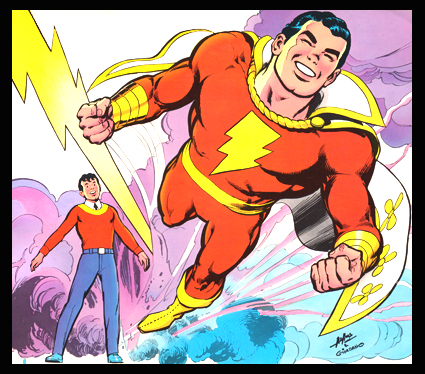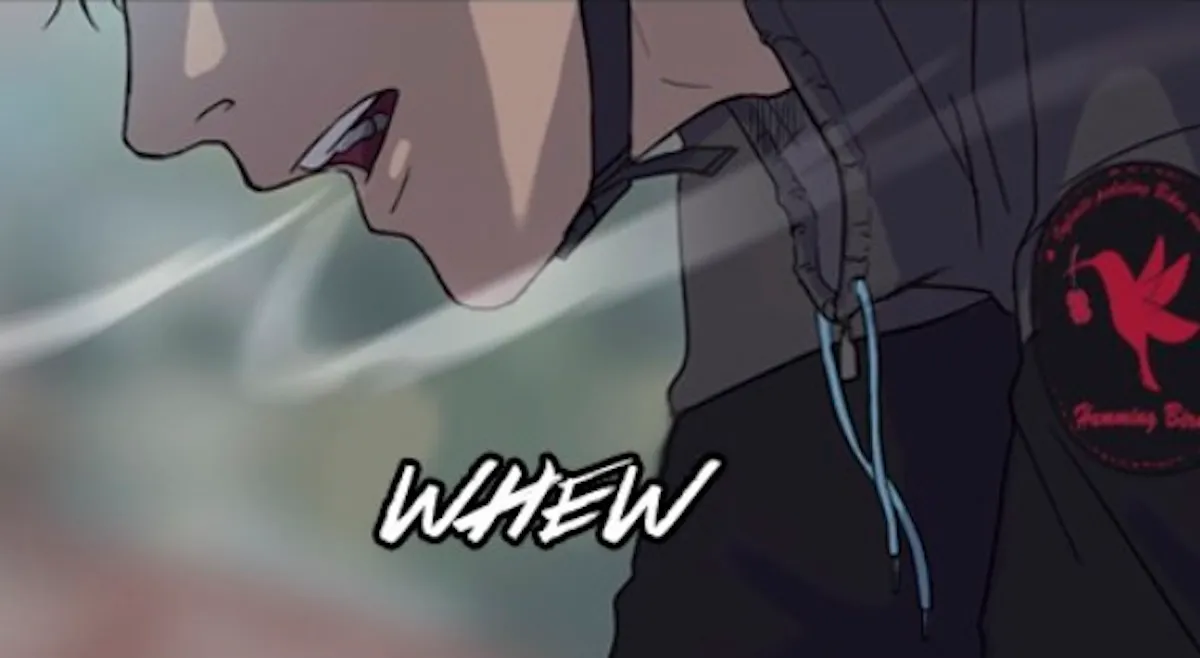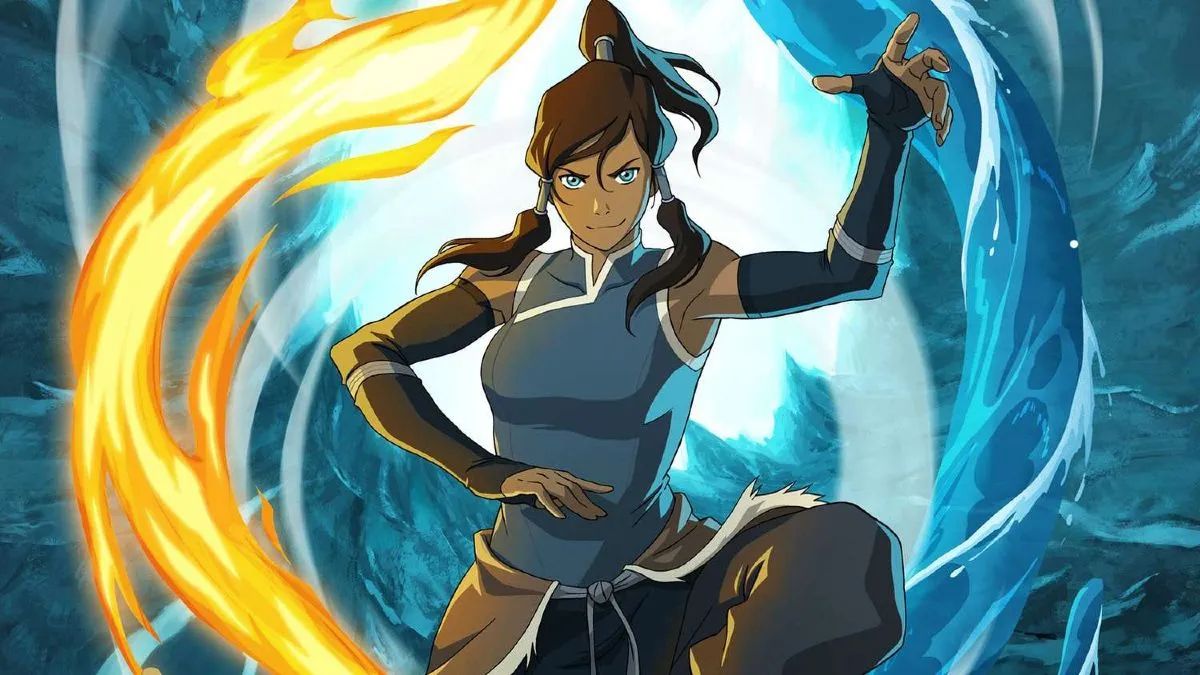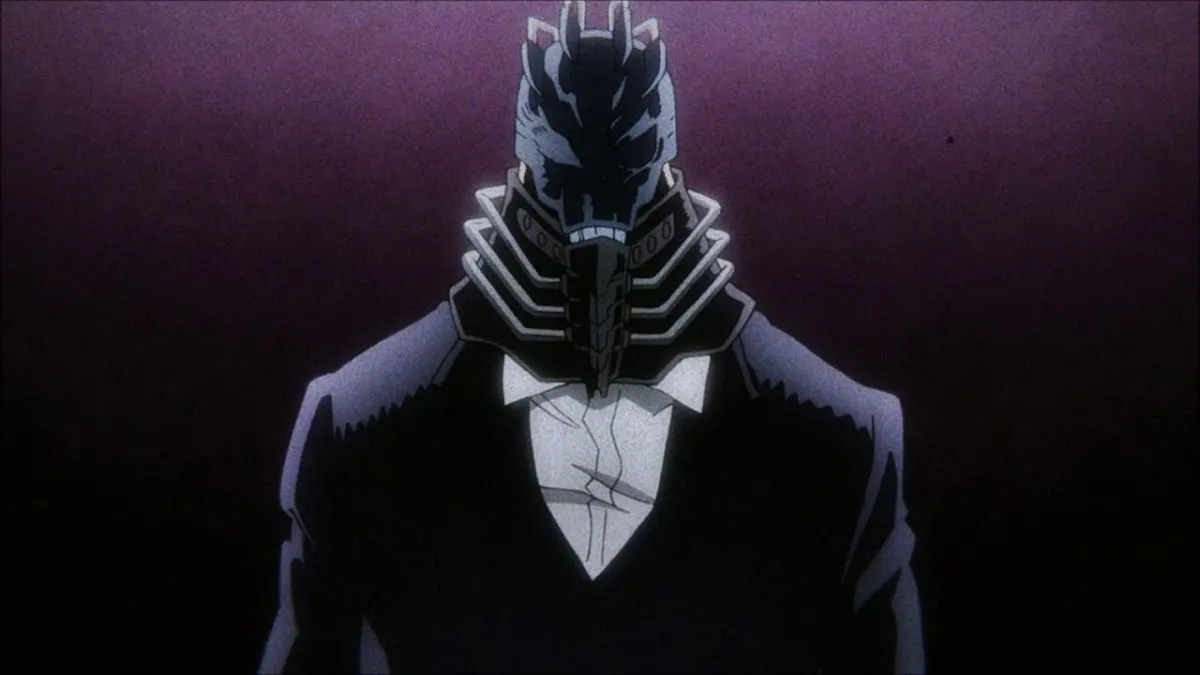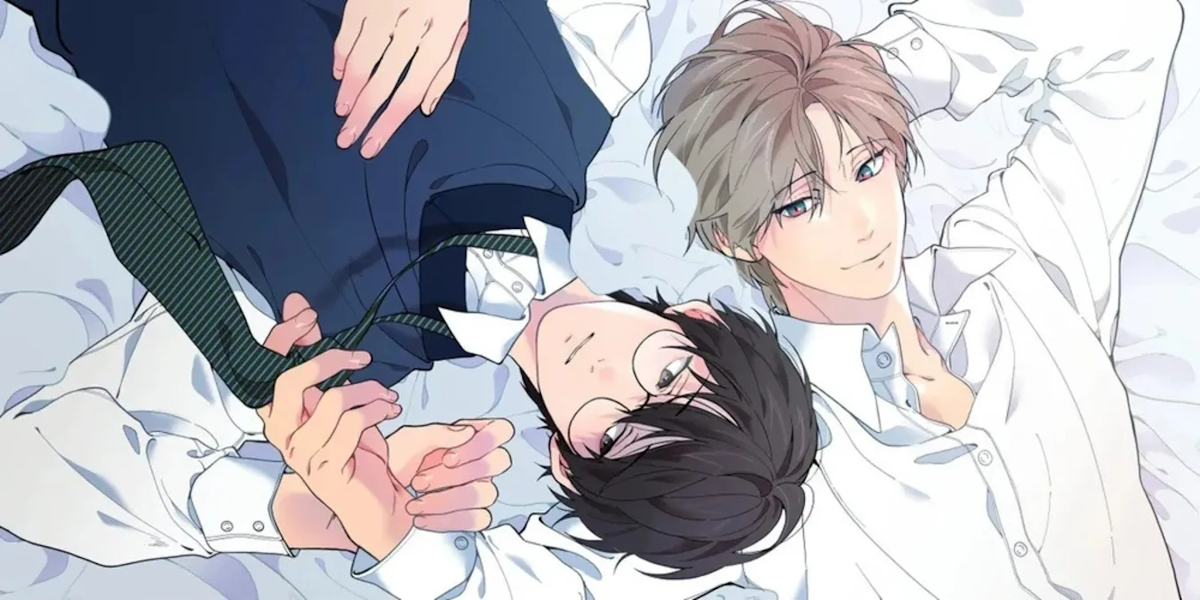There have been a fair number of characters using the name Captain Marvel. So this is part one of our look at the topic. We are starting with the original character to use that name, Billy Batson, a character who often has simply been called “Shazam” and whose successor took that as his official name in 2006. In the “New 52” universe of DC Comics, Billy and his related characters were recently rebooted and now he is simply called Shazam. We’ll talk about the Marvel Comics characters called Captain Marvel in our next piece. Shall we begin?
THE WORLD’S MIGHTIEST MORTAL
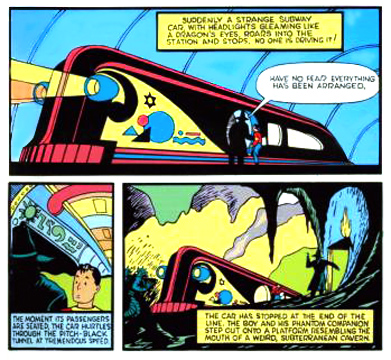
The original Captain Marvel was introduced in 1940 from Fawcett Comics. Created by writer Bill Parker and artist CC Beck, Billy Batson was a pre-adolescent orphan providing for himself as a newsie. One night, a shadowy figure guides him to a subway station where a strange, unearthly train car awaits. Billy rides the train, leaving Earth and entering the mystical caves of the Rock of Eternity, where an elderly wizard named Shazam sits with a giant stone suspended above him. His time is ending after several thousands of years and Billy has been chosen to take up his role and mantle. When Billy says the wizard’s name, a magic bolt of lightning transforms him into an adult hero possessing the wisdom of Solomon, the strength of Hercules, the stamina of Atlas, the power of Zeus, the courage of Achilles, and the speed of Mercury. A second magical lightning bolt causes the suspended stone to fall and the wizard is killed, his time finally over (though his spirit inhabits this strange Rock of Eternity).
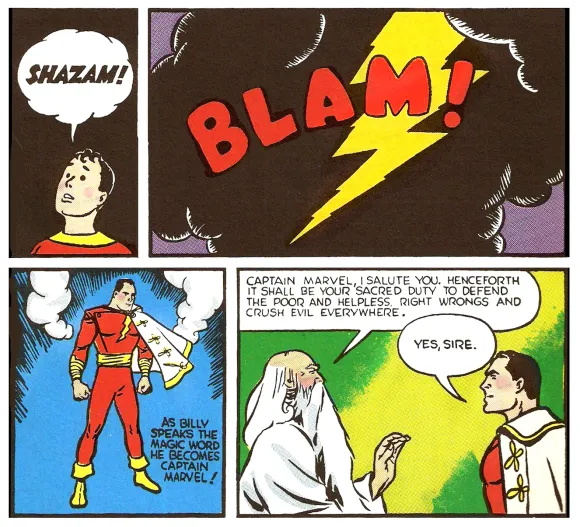
Originally, the character was going to be called Captain Thunder, fittingly. But it turned out that this name was already being used by a character introduced earlier that year in Jungle Comics, published by Fiction House. There are also accounts that it became a concern that the name “Captain Thunder” would be frightening for kids. In any case, the name became “Captain Marvel.” At this time, there was no company called Marvel Comics (the publisher was known as Timely at the time), so there was no real concern about brand confusion.
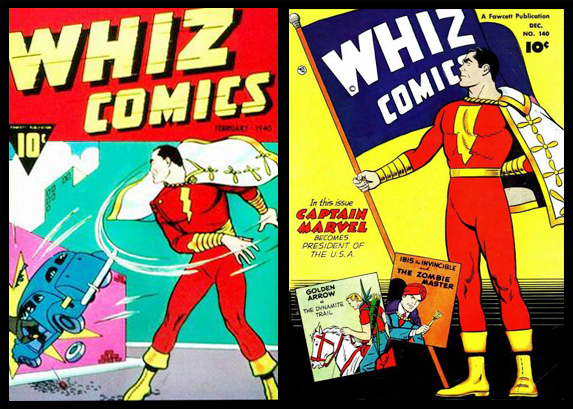
An ashcan copy of Whiz Comics #1 was printed to secure copyright but never released to the public. Whiz Comics #2 was published and sold soon afterward, introducing Captain Marvel to the world. There was definitely an emphasis on the word Captain in his design. With that sash and decorated cape, he looks like a military figure from some bright futuristic society that might be visited by Flash Gordon or Buck Rogers.
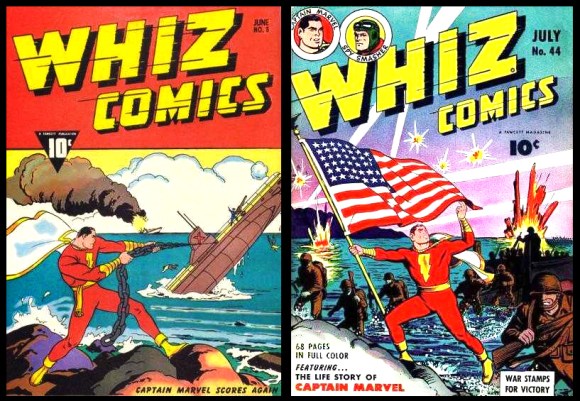
There’s a wonderful simplicity in the Captain’s outfit. It’s a very strong design. Although it shares similarities with Superman’s influential costume, it differs in two major respects. For one, the visible button and seams grounds it more in our reality rather than seeming like a second skin magically painted on the hero (though the shirt did become tighter and lose the visible button soon enough). Second, it avoids the shorts over trousers look that would become dated in just twenty years.
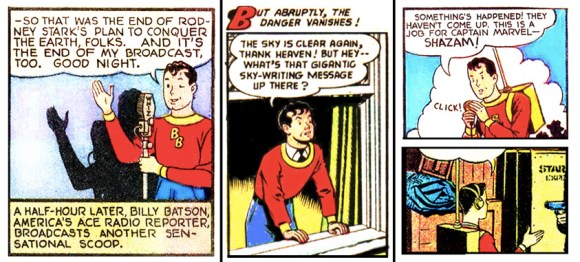
I don’t normally talk about the civilian alter ego’s wardrobe, but I feel the need to point out Billy’s adorable sweaters which were often monogrammed. As a high-tech radio journalist, he sometimes wore a portable radio transmission set-up on his back. What a resourceful kid!
THE MARVEL FAMILY
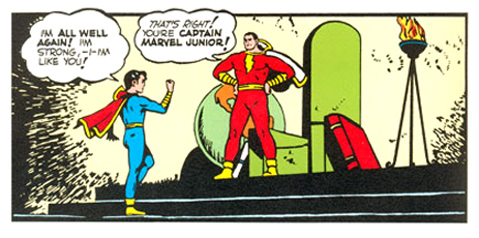
It wasn’t long before Captain Marvel got a second ongoing title and was the first comic book superhero adapted for live-action media. He also started building up a super-powered family. In 1941, we met three other kids also named Billy Batson, distinguished by the nicknames Hill Billy, Fat Billy and Tall Billy. The shared name meant they could also call on powers by shouting “Shazam!” Later the same year, Fawcett decided it needed a more serious attempt at a spin-off.
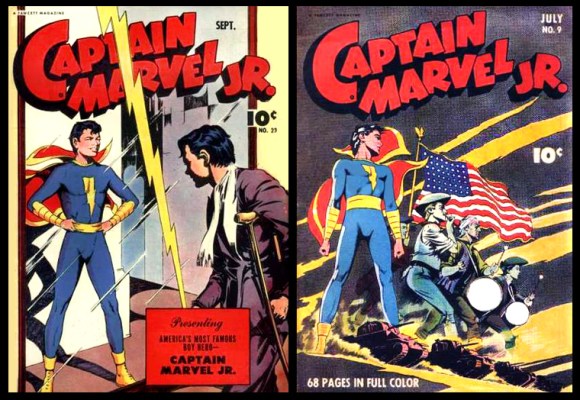
In a 1941 crossover with another Fawcett hero called Bulletman, Captain Marvel recklessly threw the villain Captain Nazi into the path of an innocent man and his grandson Freddy Freeman. The grandfather was killed and Freddy was critically injured. Holding himself responsible for this collateral damage, Captain Marvel took Freddy to the Rock of Eternity and shared a portion of his power with the boy. Now, when Freddy said “Captain Marvel!” he became a hero with a striking blue version of Cap’s costume, complete with red cape. Since he didn’t turn into an adult when he transformed, he was Captain Marvel Jr. I personally think this is a dumb name even for a Golden Age character, especially since Freddy couldn’t introduce himself without transforming.
Though he was powerful as CM Jr., Freddy’s human self didn’t completely heal from his injuries and his left leg lost its mobility. This made him an early example of a superhero dealing with a physical disability. His artwork and stories were less whimsical than Captain Marvel’s, often dealing with social issues and war. He gained a strong fanbase of his own, including Elvis Presley, who adopted the lightning bolt as his business symbol and imitated CM Jr.’s costumes in his later years.
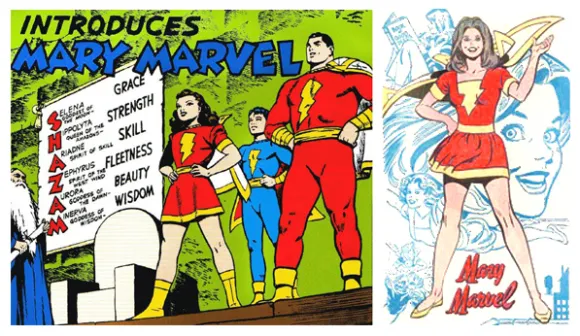
One year after the introduction of CM Jr. and over ten years before Superman met his cousin Kara, Billy Batson discovered he had a long lost sister named Mary, who had been adopted by the Bromfield family. By shouting “Shazam,” Mary Bromfield became Mary Marvel, blessed with the grace of Selena, the strength of the Amazon queen Hyppolyta, the skill of Ariadne, the fleetness of Zephyrus (the only male god/spirit of the bunch), the beauty of Aurora, and the wisdom of Minerva. Later comics would switch Ariadne with Artemis and Aurora with Athena.
Mary Marvel’s costume was basically Billy’s, just with a skirt instead of trousers and short sleeves. I find it odd that she doesn’t get bracers. By the 1950s, Mary ditched her boots for more dainty slippers and altered the collar of her shirt to be lower and meet the lightning bolt. It seems a lost opportunity not to give Mary her own distinct color from Billy, just as Freddy had his own. That finally happened decades later.
With these three heroes, the Marvel family franchise was responsible for keeping Fawcett Comics afloat as it overshadowed Superman in sales. National Periodicals, the company that became DC Comics, sued Fawcett for ripping off of Superman, pointing out various similarities in the heroes. The legal battle went back and forth for years and meanwhile, the Golden Age of comics wound down as superheroes became less popular. In 1954, Fawcett Comics ended publication of the adventures of Captain Marvel and called it quits.
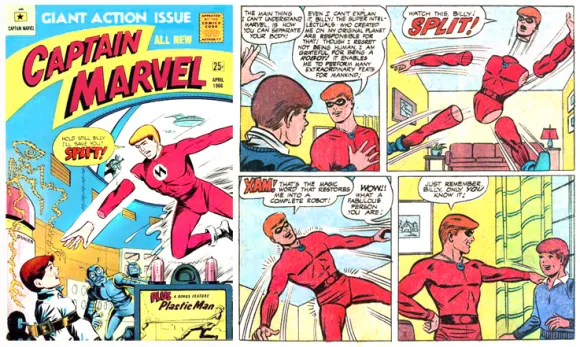
In the 1966, right before Marvel Comics introduced their own superhero called Captain Marvel, the title was used for a bizarre character published by MF Enterprises. Stick with me here, because it gets weird. A young boy named Billy Baxton met an android called Captain Marvel. Fittingly, Carl Burgos, who created this android hero and is famous for creating the original Human Torch (also an android) penned the story. Along with laser vision, the MF Captain Marvel would say the magic word “SPLIT!” to cause his body parts to fly around. He would re-merge into a single being by shouting a second magic word “XAM!” Get it? “Shazam” became “Split/Xam!”
This weirdo version of Captain Marvel, along with his rogues gallery of characters who ripped off names and traits from more famous characters, was short lived and is now largely forgotten. So let’s never speak of this moment again.
1970s RIVIVAL
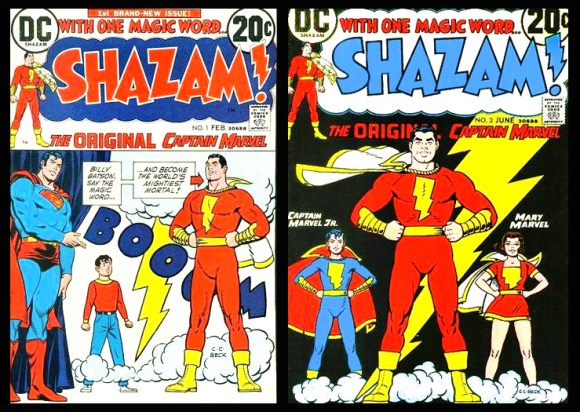
By 1973, DC Comics, which now owned the rights to Billy Batson and his world, decided to bring back the Marvel family. They couldn’t use the title “Captain Marvel” for the series since Marvel Comics now owned the rights to that, so it was officially called Shazam!. Underneath the title, a banner proudly told readers that this was the ORIGINAL Captain Marvel.
The comic quickly retold Billy’s origin, then explained that decades ago, Captain Marvel, the Marvel Family, the evil Sivana family, and their home of Fawcett City had been hit with a substance called Suspendium. This kept them all in suspended animation until the modern day. Thus, Billy and his entire supporting cast were back and all of their adventures from the previous era of the character were still canon. The main adventures of these books were done by writer Denny O’Neil and original Captain Marvel artist C.C. Beck. Back-up stories were written by Elliot S! Maggin, who would later do some very influential Superman tales.
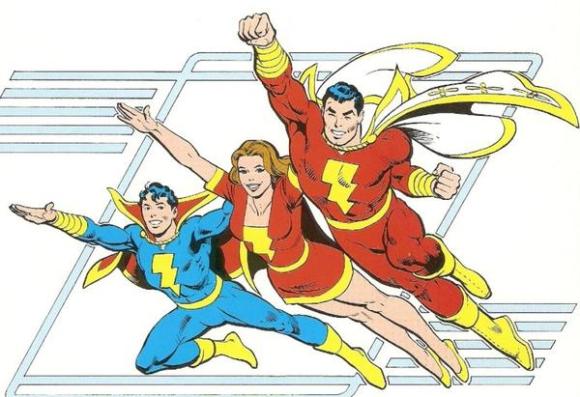
In 1974, Superman and Captain Marvel were going to have a crossover. But Elliot S! Maggin and editor Julius Scwartz discussed the matter and decided that it didn’t quite work. Maggin believed it was better to keep Billy Batson and his cast of characters in a world – later called Earth-S – that was separate from the DC Universe (I definitely agree). He thought that the atmosphere of the Shazam heroes involved a different sort of suspension of disbelief and was simply more whimsical, while DC heroes were becoming increasingly involved with social issues, darker stories and were geared towards an older audience.
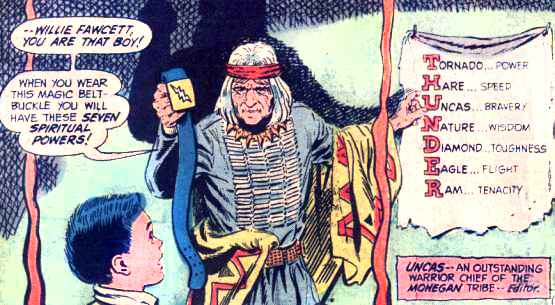
Maggin and Schwartz decided that the solution was to introduce a counterpart for Billy who fit into the DC Universe. So in Superman #276, Elliot S! Maggin introduced a young boy named Willie Fawcett (get it??) who was given a magical lightning talisman attached to a belt. Wearing the belt, he shouted the word “Thunder” and was transformed into a champion by a magical starburst making a “Sha-Boom!” sound. As Captain Thunder, Willie gained the power of the Tornado, the speed of the Hare, the bravery of the Mohegan warrior chief Uncas, the wisdom of Nature itself, the resiliency and toughness of a Diamond, the flight of the Eagle, and the tenacity of the mighty Ram.
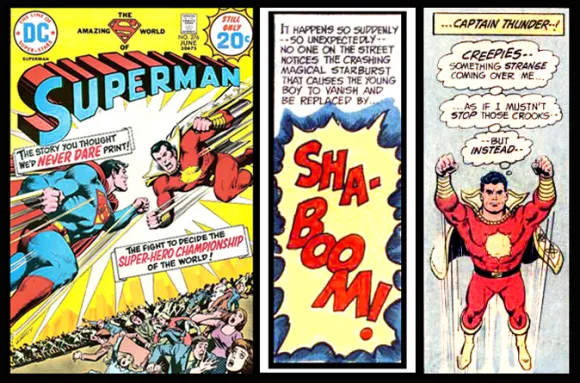
Captain Thunder was nearly identical to CC Beck’s classic hero. The only real differences were that he had a starburst rather than a lightning bolt on his shirt and wore a black belt with a lightning bolt buckle rather than a sash. The presence of BOTH symbols makes it seem as if Captain Thunder here was just indecisive about his superhero emblem.
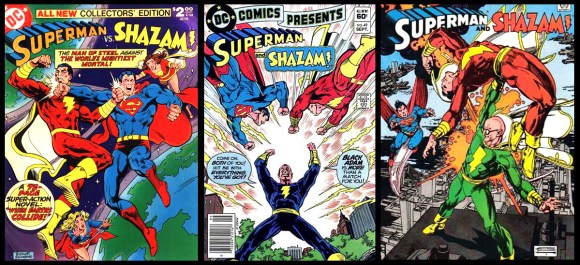
A couple of years later, DC said “screw it” and had Superman and Captain Marvel cross dimensional barriers to meet for real. On the covers for most of these stories, he was simply referred to as “Shazam” as if that were his name. This began a trend where both readers and people not totally familiar with Billy would just call him “Shazam” rather than “DC’s Captain Marvel, not Marvel’s Captain Marvel.”
Before the 1970s were done, Shazam was cancelled. Billy made several more appearances in other DC Comics, almost always fighting with Superman or alongside him. Seriously, it’s bizarre how often these two fought when they were both pretty nice, coolheaded guys usually. These stories also pitted Superman against Dr. Sivana (who stole the Shazam powers and got a green version of the costume) and brought back Black Adam, an evil predecessor to Captain Marvel who had operated during Ancient Egypt and had only appeared in one Fawcett Comics story.
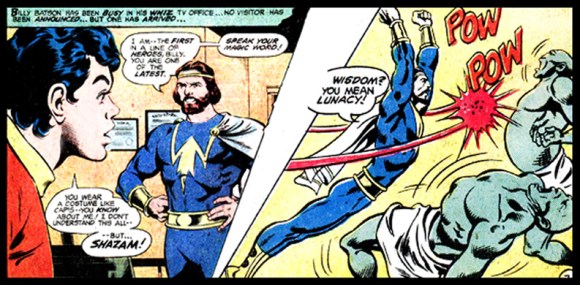
Speaking of characters from ancient times, we finally got to learn the origin of the wizard Shazam in “The Captain Marvel of 7,000 BC,” published in World’s Finest Comics #262 in 1980. Written by E. Nelson Bridwell and drawn by Don Newton, this story had the young Shazam, calling himself “Champion,” journey into the future and recruit Captain Marvel’s help. We learned that he too was really an adolescent boy who transformed into a hero with a magic word, in his case “Vlarem” (an anagram for “marvel”). This referenced his abilities: the strength of Voldar, the wisdom of Lumiun, the speed of Arel, the power of Ribalvei, the courage of Elbiam, the stamina of Marzosh. Together, Captain Marvel and Champion actually created the Rock of Eternity that would serve as Shazam’s base thousands of years later.
Not crazy about his emblem, but I do like that Champion has his own look rather than one that mimics Billy’s. It’s a little generic as superhero body suits go, but the headband and style of the cape are nice touches.
THE NEW BEGINNING AND WHAT COULD HAVE BEEN
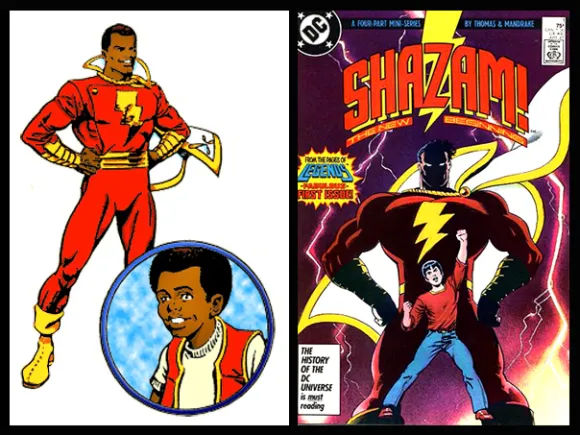
In 1986, the crossover Crisis on Infinite Earths ended with all of the main universes of DC Comics (most of which represented different continuities they had bought out from other publishers) combining into one, new unified timeline, with many characters rebooted. Writer Roy Thomas wanted to personally reboot the Captain Marvel character with the name Captain Thunder. He also wanted to add some diversity to the DC Universe by making the rebooted character black. Artist Don Newton came up with a character sketch, inked by Jerry Ordway.
But the gods of DC Comics nixed this idea. In 1987, Roy Thomas and artist Tom Mandrake did the mini-series Shazam! The New Beginning. By this time, the “grim and gritty” 80s was in full swing. It was popular to revise and deconstruct superheroes so they didn’t seem at all silly and their internal pain was emphasized. Roy Thomas took this approach with Captain Marvel, explaining in his introduction that he was aiming for a “realistic” approach that modern readers enjoyed more, dismissing the “baggage” of the other heroes empowered by magical lightning and such.
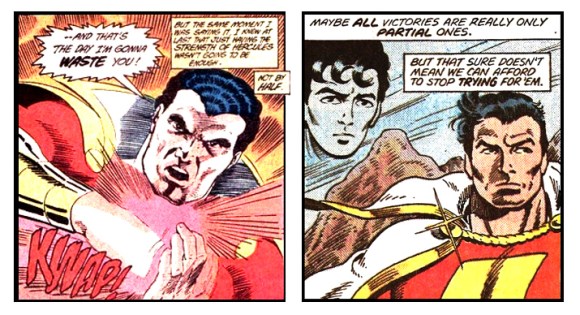
The costume didn’t really change but the hero did, now traumatized by his parents’ death and abuse from family members. The wizard at one point mentioned the possibility of other characters such as Mary Marvel and CM Jr., but then dismissed this as madness, a not so subtle dig at the told days. The mini-series met with largely negative criticism, so a few years later, Jerry Ordway was put in charge of yet another reboot with the graphic novel The Power of Shazam. The origin was reverted to more closely resemble the original Fawcett version, though there were still a few differences to make Captain Marvel grittier and even a little ruthless (such as severing Theo Adam’s vocal chords so he couldn’t say “Shazam” and become Black Adam).
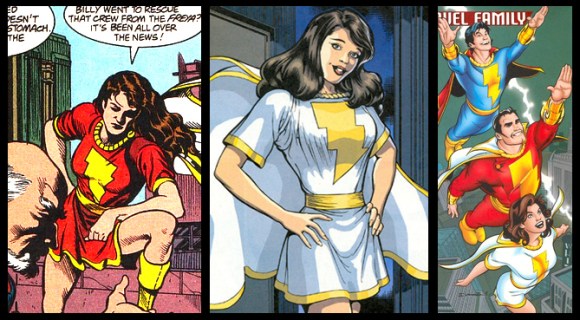
This graphic novel led into a new series of the same title for several years. He was joined by Mary Marvel and then later Captain Marvel Jr. again. Eventually, Mary Marvel got an all-white costume that was first worn by an alternate timeline version of her mother. The all white look really works with Mary and also has the added benefit of making her, Captain Marvel and CM Jr. into a trio of red, white and blue. By the way, in the new series, no one beyond Billy called Mary by the name “Mary Marvel” in the stories for years. Because that was deemed too silly. So it was deemed that she and Billy were BOTH Captains.
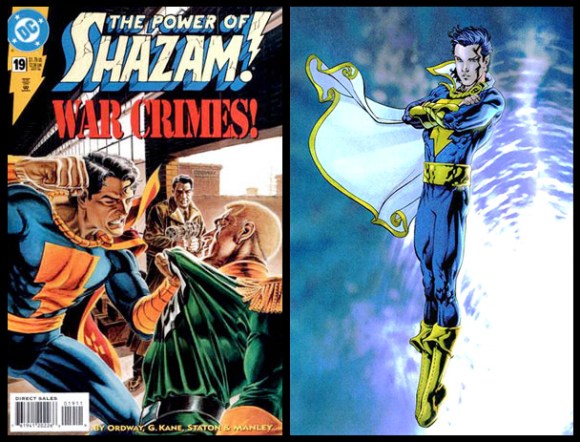
Later on, Freddy Freeman got so sick of being unable to introduce himself to his Teen Titan teammates that he adopted the name CM3 (since, in the Post-Crisis universe, he was the third person to be given the power of Captain Marvel). This name didn’t last too long, but another change came when Freddy changed his red cape for a traditional Captain Marvel white one. It definitely still works. What’s more, certain artists tried making him look more like a young Elvis, making it a case of life imitating art that then imitated life.
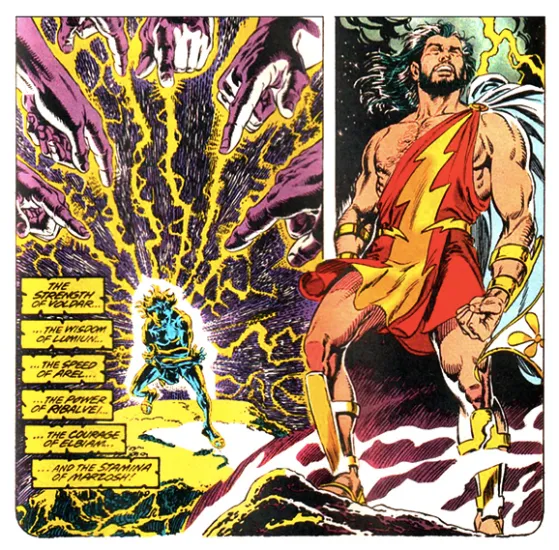
In The Power of Shazam # 10, Jerry Ordway showed us his version of the wizard Shazam’s origins, using some elements from Bridwell’s “The Captain Marvel of 7,000 BC.” The young Shazam, whose birth name is revealed to be Jebediah, lost his family before becoming a superhero of his age. On one hand, it’s nice to see that this costume implies a lineage with Captain Marvel. On the other hand, it looks way too similar to a costume said to be designed by Billy’s subconscious millennia later.
MORE REBOOTS!!!
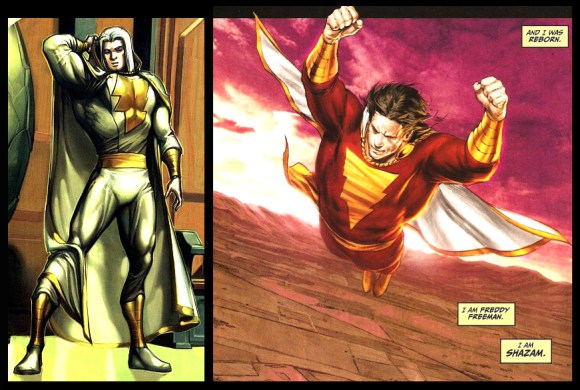
In the 21st century, it seems we can’t help but continually try rebooting Billy Batson and the Captain Marvel franchise. In 2006, The Trials of Shazam had Billy Batson take the name “Marvel” and assume the wizard’s old role, taking up residence in the Rock of Eternity. Freddy Freeman was chosen to succeed him and went through various trials to gain the mantle and full power that Billy had once wielded. But he didn’t call himself “Captain Marvel.” He officially took the name “Shazam!” Because DC figured, screw it, that’s the name we’re allowed to use on covers and lots of people call him that anyway.
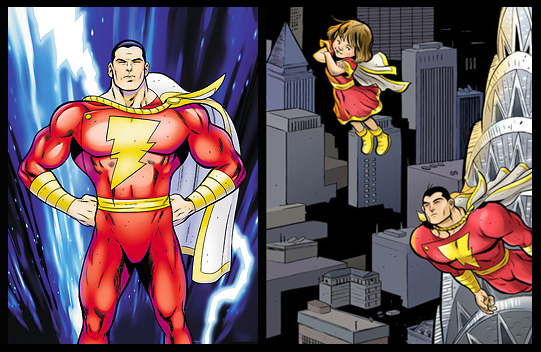
The same year, writer Judd Winick did a revision of his origin called Superman/Shazam: First Thunder, which now added the tragic element that Billy’s recklessness led to the murder of his best friend, after which the Man of Steel became Captain Marvel’s mentor. This did not strike a chord with fans and so, less than ONE YEAR LATER, it was swept aside for a brand new reboot. Jeff Smith, known for his work on Bone, was up to bat now. Smith insisted that he would not do the book unless this was considered the canon origin for Captain Marvel and would have other stories following its continuity. DC said sure and the result was the mini-series SHAZAM! The Monster Society of Evil. It is an adorable, fun, hilarious all-ages tale that also has my favorite version of Mary Marvel.
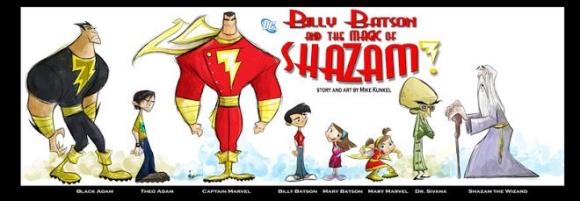
DC continued a similar atmosphere with a new, out-of-mainstream-continuity comic called Billy Batson and the Magic of Shazam!. It was another adorable, all ages series with fun twists on Black Adam. Alas, this fun was not to last. In 2011, DC Comics did another across the board reboot of its superhero universe. So the four reboots that Billy had experienced since 1986 were all thrown out the window.
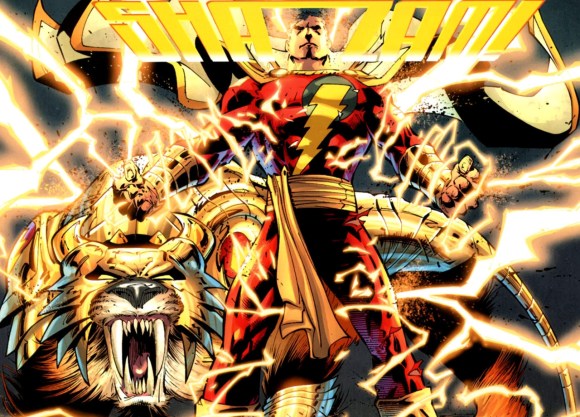
We first saw an alternate timeline version called Captain Thunder in the pages of Flashpoint. In this reality, Billy and several fellow foster kids all combined to become the hero, who now had a black circle behind his lightning emblem. This recalls the character Infinity Man of the New Gods, who was summoned when the teenage Forever People all traded places with him. Meanwhile, his tiger pal Tawky Tawny seemed to take inspiration from He-Man’s feline companion Battle Cat.
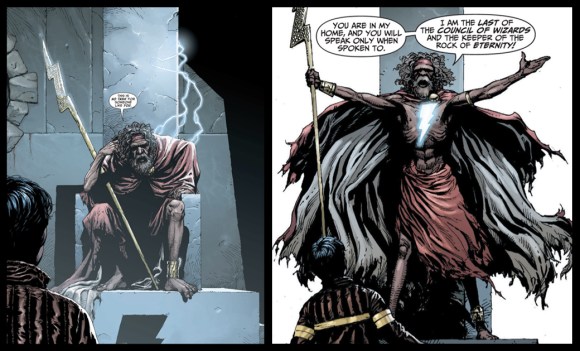
The official new, mainstream origin for Billy was presented in the pages of Justice League. Now, the wizard Shazam went through dozens, possibly hundreds of candidates before finally finding Billy Batson. He had been searching for a person of pure heart, but the manipulative and often selfish orphan didn’t fit the bill. Then, Billy pointed out that no one was pure and Shazam decided the boy had potential, since at times he tried to be good even though he often suspected it wasn’t worth the effort. Billy called down the lightning and became an adult superhero simply called Shazam.
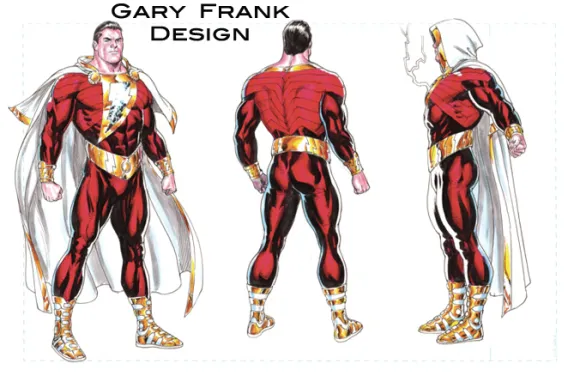
Gary Frank was behind this redesign. The New 52 universe that emerged in 2011 involved many of DC’s heroes getting body armor like designs with lots of seams and parts. This outfit certainly fits into that mold. To emphasize that Shazam has magical abilities, he now has a hooded cloak rather than the military style cape. The lightning bolt symbol is replaced with literal lightning that charges up on his shirt and the white areas of his bracers and boots when he’s fighting and flying.
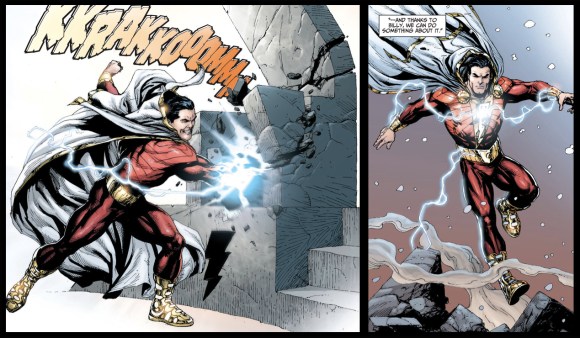
I get the idea that Billy is supposed to be a living lightning bolt now, but I still usually think that sometimes less is more. If he’s a magical character, then I’d rather he looked more different in style to the largely sci-fi superheroes of the Justice League. I also think the abundance of lightning and charged costume pieces make him look more like he’s a scientific hero empowered by technology. Again, that’s just my own personal taste.
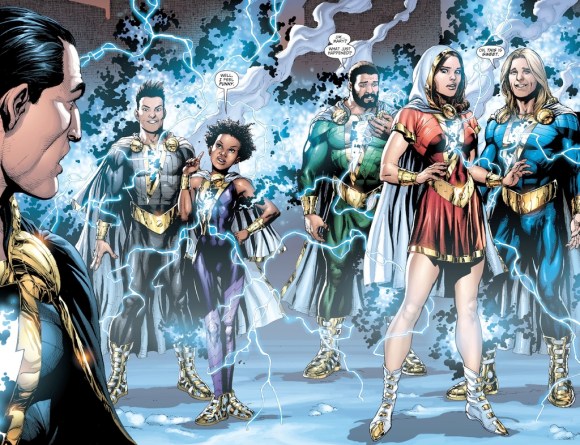
During his origin, Billy was able to share his power with the other foster kids who lived with him, creating a new version of the Shazam family who then helped him kill Black Adam (though he resurrected a few months later). These are some fun looks, but I do object to Freddy Freeman being blond and no longer resembling Elvis. That just feels wrong. I’m also not sure why Mary has different boots than the others and I still find it problematic having a flying character in a skirt. Ah, well. Darla looks pretty great in her purple get-up, doesn’t she?
And that wraps it up for now folks. I know you’re thinking “Wait, dude, what about Black Adam?” Well, we’ll get to him in his own column, especially since he wasn’t the only evil version of Captain Marvel to appear in comics (remember evil Mary Marvel?). Until next time, this is Alan Kistler, Agent of S.T.Y.L.E., signing off.



